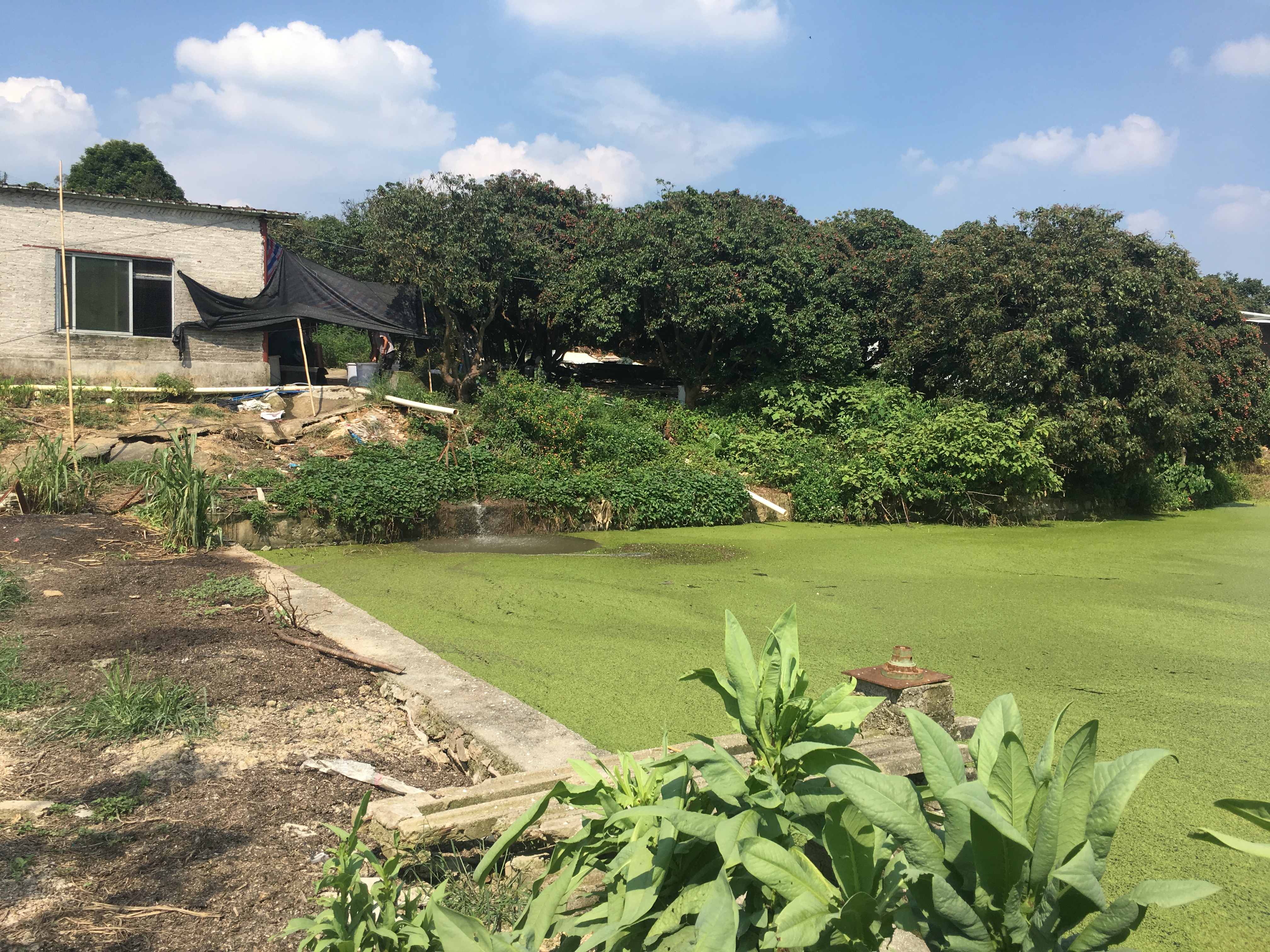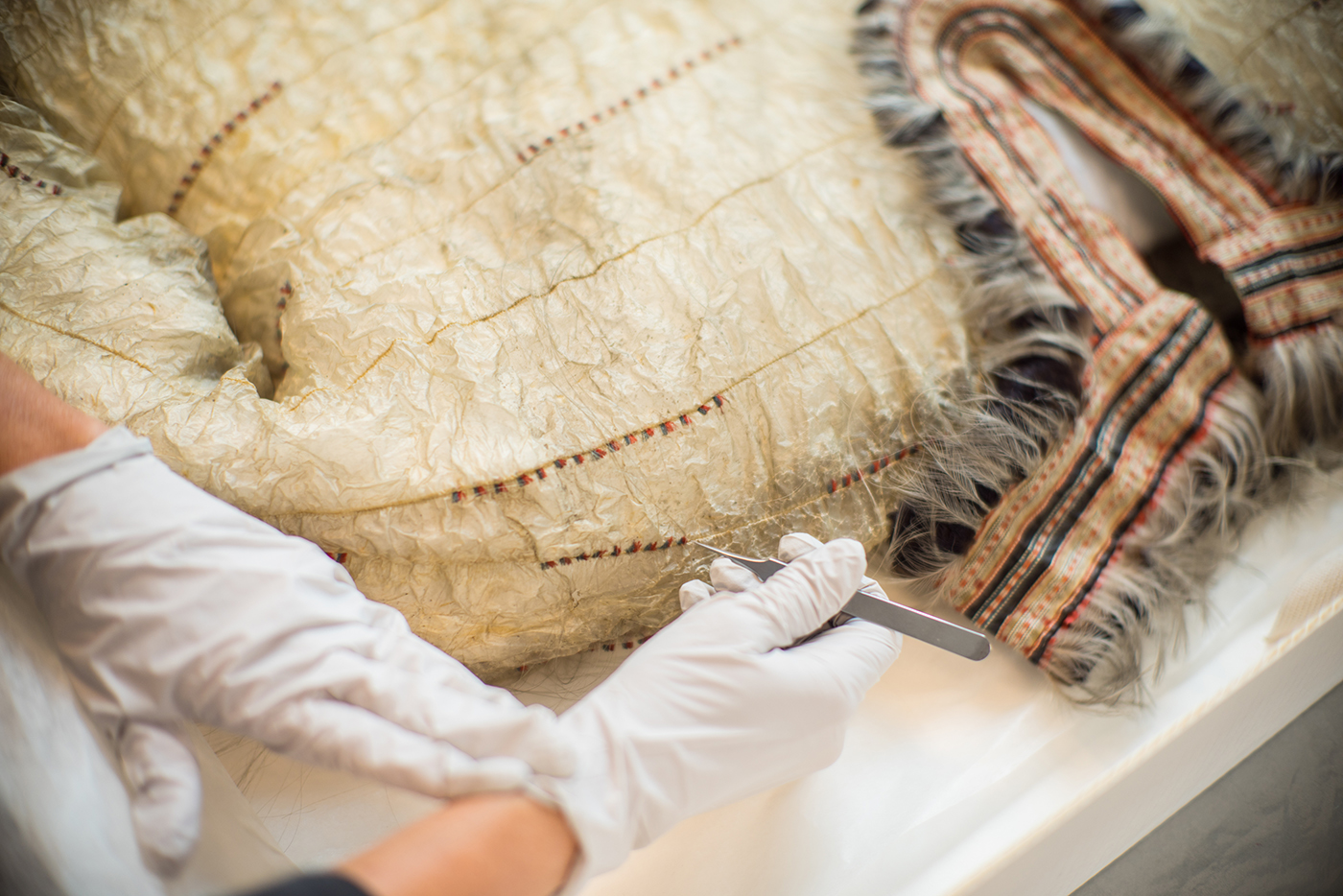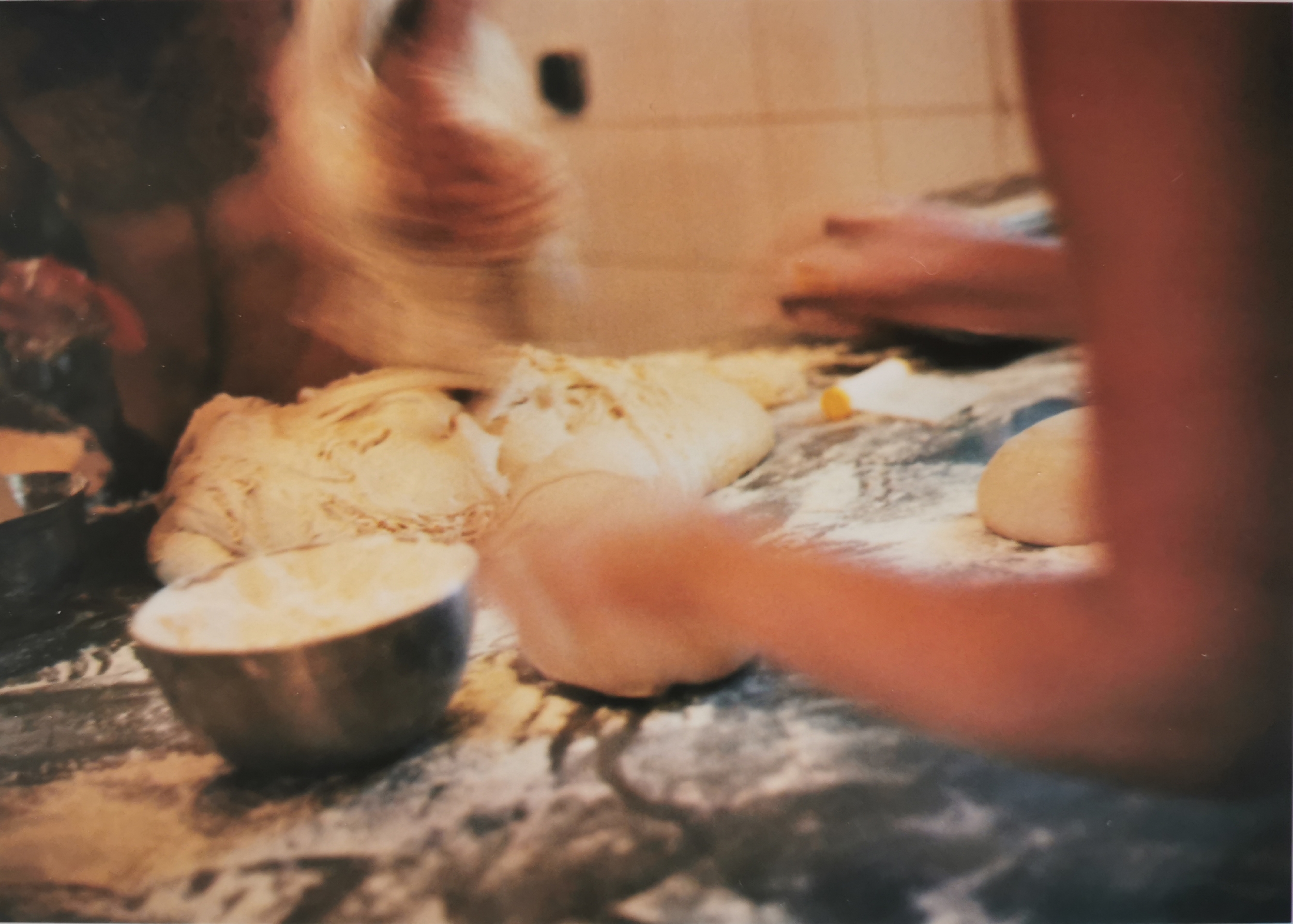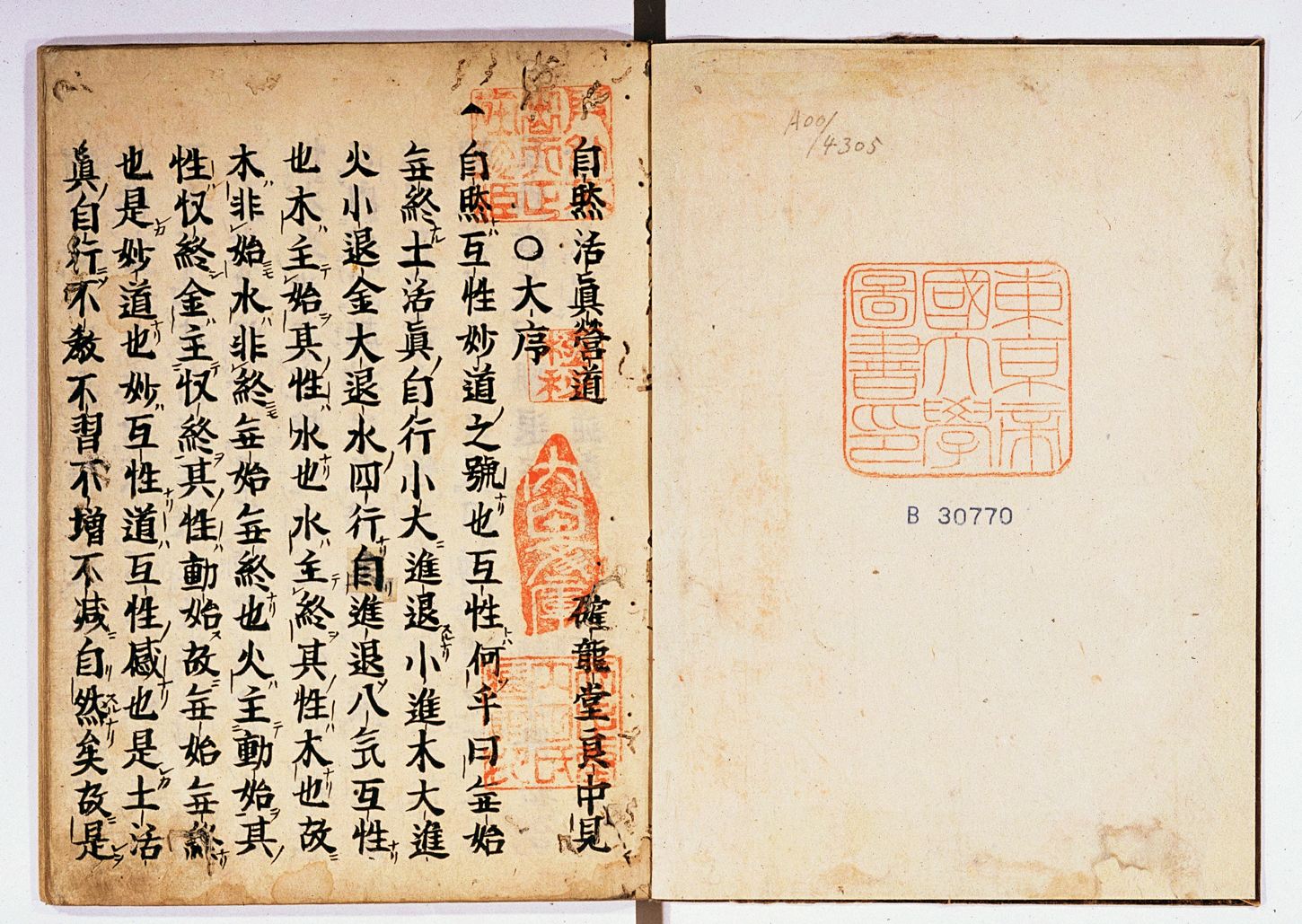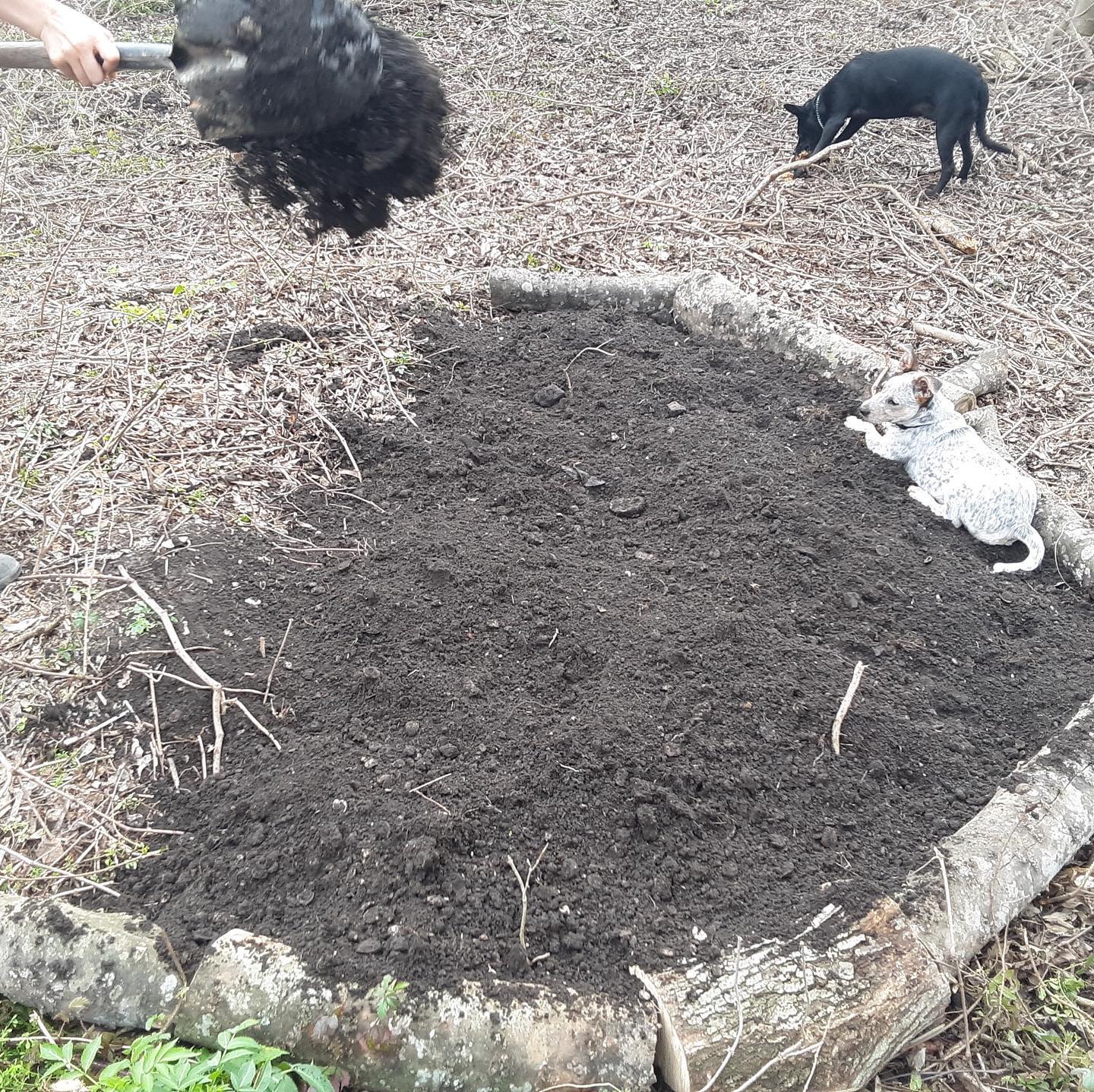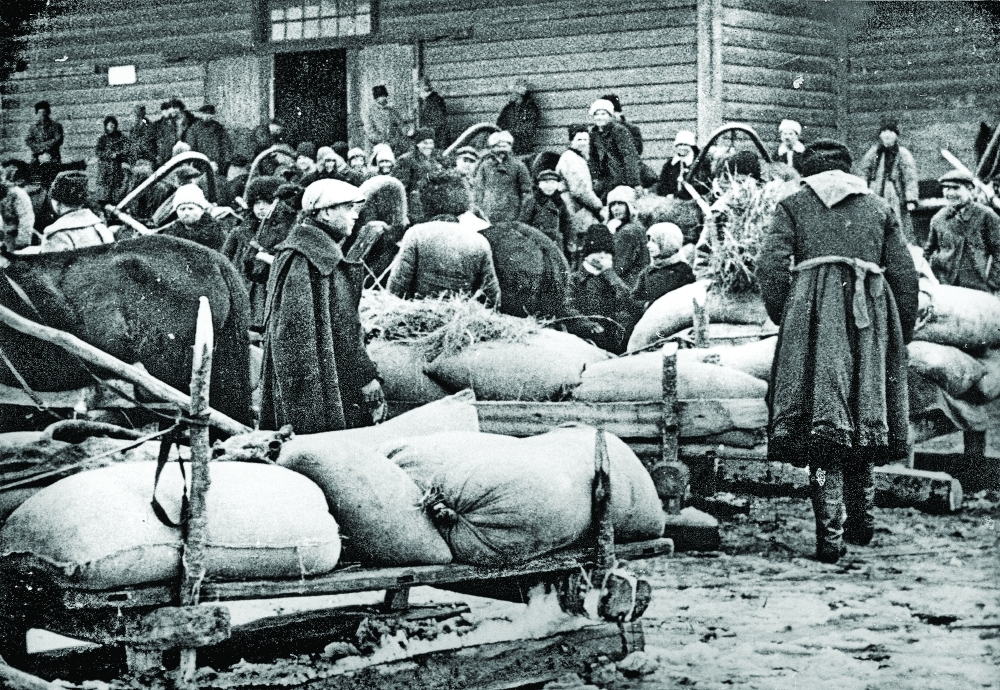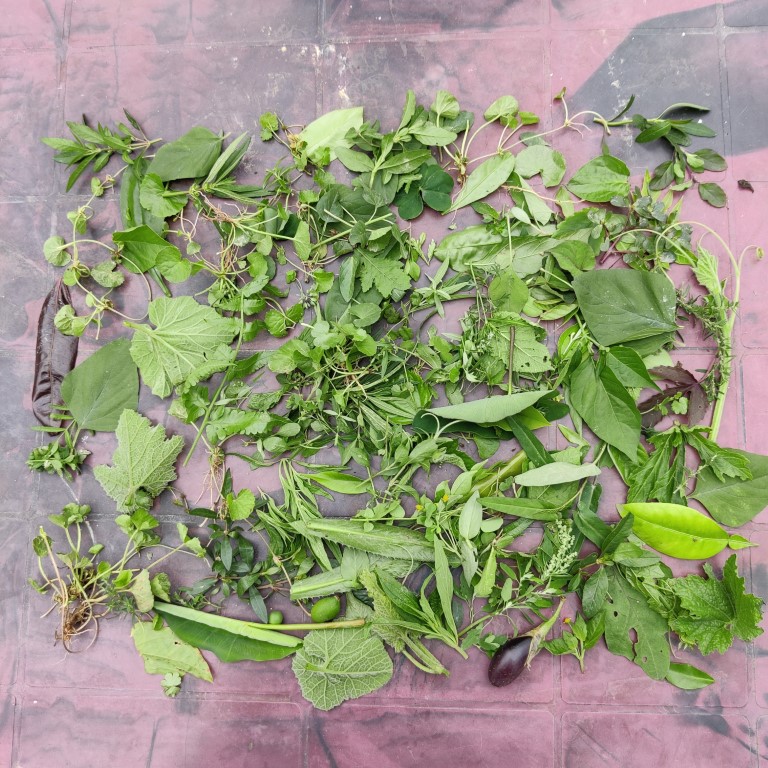
101 foraged wild herbs for Bihu festivities in Assam, India. Photo by Kazu Ahmed.
On the first day of Bihu—Assamese New Year, in April—I join a group of women to forage for wild herbs. The objective is to gather 101 different wild, edible plants in celebration of the beginning of the new harvest year. The oldest woman in the group, in her early sixties, can distinguish the edible plants from the nonedible ones and knows most of them by name. She carries a small bag in which the various wild herbs are gathered, and she keeps a running tally. We wander around the grounds between houses, around fields, and in the forest, and we walk through a forest garden adjacent to fields that will soon be planted with paddy. We keep our eyes glued to the ground. After the well-known plants are bagged, we pass to her some new-looking plants, for her approval. In about a half an hour, we reach the number of plants required.
We then supplement the 101 herbs with a large stock of common herbs so they can all be used to make a dish for dinner. The plants are washed, and a group of four women squats in one of the backyards to sort the ingredients. The harder stems are removed, and then the herbs are gathered into bundles and shredded using curved knives. A large handful of garlic cloves is peeled, ginger is sliced, and then a few potatoes are mixed in. One of the women heats up some mustard oil, fries the garlic, ginger, and potatoes, and then adds the large bowl of greens. She lightly sautés everything until the greens wilt, and then she packs a small tub for each of the households to take home for dinner.
Wild herbs are a central part of the cuisine of Assam, a state in northeast India. Foraged, wild herbs are eaten with garden-grown vegetables and free-range meat and fish. Here, herbs are more than food; they are also used as herbal medicine in the local healing tradition, bon-oukhodi. Hippocrates said, “Let food be thy medicine and medicine be thy food.” In Assam, this is a literal, quotidian practice. In addition, herbs are a key ingredient in local rice beer. People drink the homemade rice beer with their meals, as nutrition, as medicine, as part of rituals, and for merriment. In Assam, wild herbs are more than just nutritious dietary supplements or even Indigenous medicine. They are central to local traditions, identities, and Indigenous mythology.
Plants in Places
Northeast India, which comprises nine states, is known for having some of the most diverse flora in the world. The state of Assam shares a border with Bangladesh to west and is separated from Bhutan, Tibet, and Myanmar by narrow strips of land that belong to the neighboring Indian states of Nagaland (to the east) and Arunachal Pradesh (to the north). Assam’s borders with Bangladesh and with Nagaland are both fraught. Various areas in Assam are regularly engaged in conflict over land use. The state is home to many different ethnic and Indigenous communities who mainly live in communal peace, but recent political unrest has targeted Bangladeshi communities—often refugees—as outsiders, with the purpose of othering Muslims in Assam. On the eastern border of Assam, Nagaland has been waging an independence struggle with both colonial and postcolonial governments, and there have been conflicts between villages across the border. In recent years, “mainland” Indian politics has made inroads into Assam; Hindu political power has increased at the expense of Muslims and other minority and Indigenous communities, stirring disharmony between various groups.
Right before the Covid pandemic, as well as during the spring of 2022, I was conducting fieldwork in northeast India, near both the border with Myanmar and the border between Assam and Nagaland. The land between the Naga Hills and the Assamese plains is very fertile, and farming is an important livelihood in the area. My fieldwork was conducted as part of a broader study of foraging and fermentation in Assam. I documented different practices of fermenting rice beer and areca nut.
Foraging for plants took place in small forests between fields and rivers, and near peoples homes in the villages. It was done on foot, and the plants were collected by hand with the help of a small sickle. Contrary to most agriculture and gardening, in these villages ingredients are collected from wild, uncultivated lands that are not tended in any way to support their flourishing. The most popular foraged plants to eat are dhekia (fern), manimuni (pennywort), and kosua (taro). They are eaten lightly wilted, boiled and/or fried with mustard oil, garlic, and ginger, or added to dahl and meat dishes.
Rice-beer brewing is common among Hindu and Indigenous communities in the region. Within these groups, rice beer is consumed by everyone, men and women alike. It is valued for its medicinal properties, as a beverage, and sometimes as part of rituals. Rice beer is not something that is ever purchased; it is only ever homemade. Making the beer requires a starter culture called pitha, which is either made at home or purchased. The pitha is said to be made of 99 wild herbs, and those who make their own forage the herb fresh before preparing the starter. The most highly regarded pitha makers are elderly men and women who can recognize hundreds of wild plants and know their medicinal properties. They’re able to select certain plants to give the rice beer particular flavors and medicinal properties. Different plants are also known to influence the preservative qualities of the pitha; for example, adding chili to the pitha is known to protect the beer against rice bugs.
The forests and fields where people like to forage in Assam are shrinking due to the privatization of land for development and urbanization. This is leading to a loss of tradition and identity.
Deforesting Identity
Wild herbs have a spiritual dimension that is connected to identity. Communities from the Boro ethnic group in Assam say that at “the beginning” (of life, of the universe), there was algae. Then a sijou (Indian spurge) tree arose. Over time, people arrived, but “they didn’t know how to live.” Gods then materialized eighteen times to teach people things, like sewing, playing the flute and the drum, and making rice beer. Rice beer, then, is also a sacrament. At celebrations, offerings of rice, fermented areca nut, herbs, and rice beer are made to the sijou, as well as to other deities and ancestors by other communities.
The villagers I spoke to expressed concerns about over-collecting plants and treating the land carelessly, which would lead to the destruction of plants, trees, and forests. They described the importance of worshipping the plants, and of asking for forgiveness from the trees before harvesting. An elderly woman explained that she had two consecutive batches of rice beer go bad, after which she asked her son to consult an astrologist to see what was wrong. The astrologist explained that the plants had been overused and were not happy.
The loss of foraging space has implications for identity. One of my interviewees explained: “If you lose your cultural connectedness to your forest, your ecology, then you lose your identity. Now the ruling party has spoken about it very openly for everyone to hear.” Plants are seen as central to identity, to “who we are.” But plant knowledge is being lost, partly because the knowledge-holders are aging; younger and urban people don’t have the time or interest to forage. Moreover, in India it is not only food culture that is being homogenized, with foraged plants no longer having a role; identity is also being homogenized. The elimination of Indigenous and minority group via intimidation, conversion, and the deportation of those without citizenship papers has led to the systematic eradication of Indigenous groups and Muslim communities.
Food is not just food. It also involves stories, intimate connections with the environment, and the politics of how we find sustenance. Questions of destructive modernization and structural violence are inseparable from the smells and textures of herbs and fermented produce.
